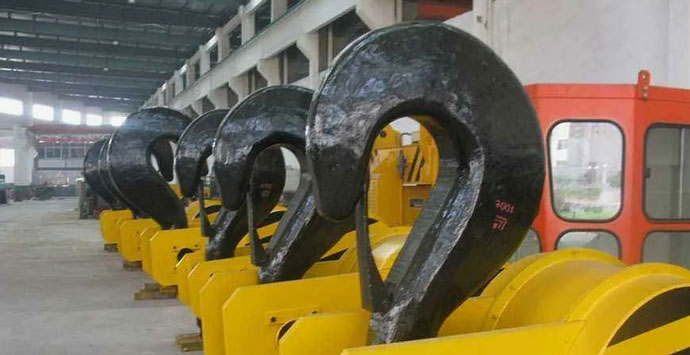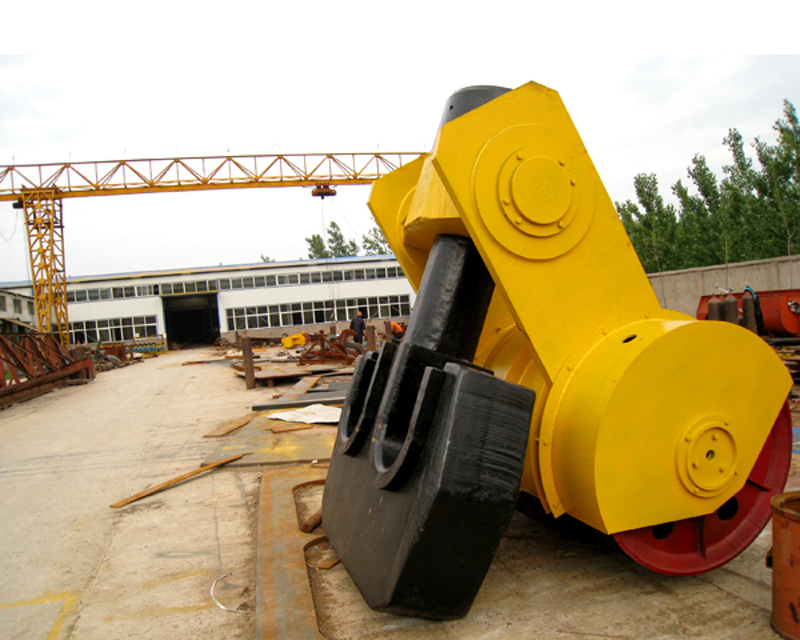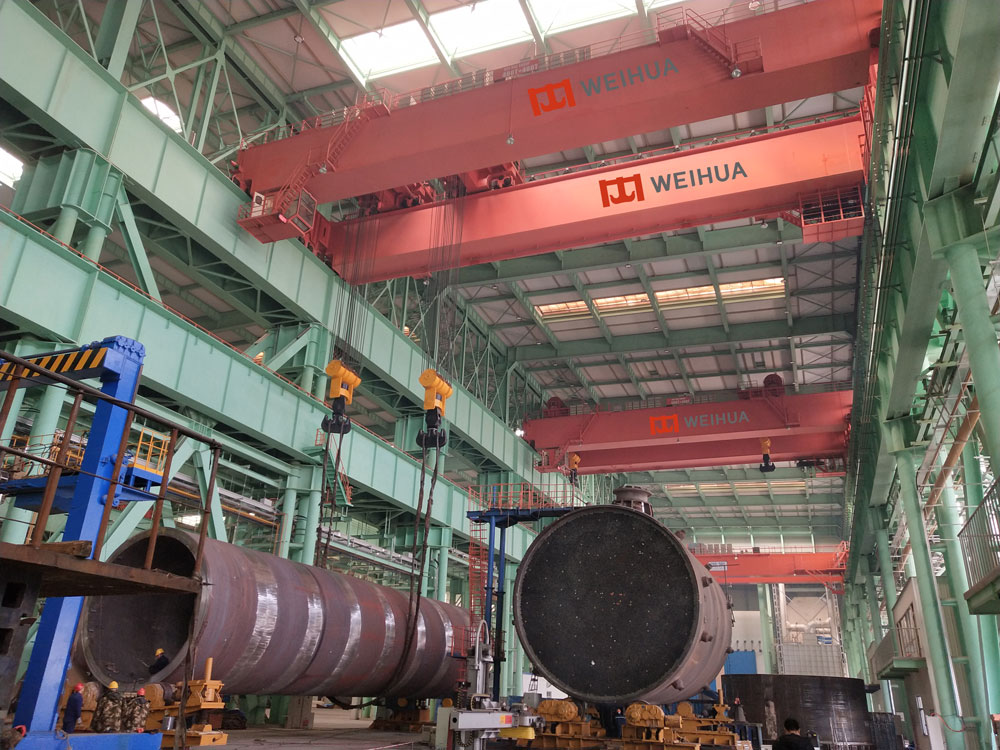Medidas de seguridad del gancho de la grúa
2025-06-05
El gancho de la grúa: a seemingly simple piece of equipment, yet it bears the critical responsibility of securing often massive and valuable loads high above the ground. A hook failure isn’t just an equipment malfunction; it’s a potential catastrophe leading to dropped loads, lesiones graves, muertes, and massive property damage. Ensuring gancho safety is non-negotiable. Here are the essential measures every operator, rigger, and site manager must prioritize:

1. Pre-Use Visual Inspection: Your First Line of Defense (Every Shift!)
- Look for Cracks & Deformación: Thoroughly examine the entire hook, especially the highly stressed areas: the shank, garganta (saddle/belly), and tip. Use good lighting. Cualquier grieta visible, bend, twist, or stretching is an immediate red flag – TAKE THE HOOK OUT OF SERVICE.
- Check for Wear: Inspect the load-bearing point (throat/saddle) and the hook tip for excessive wear. Compare to the original profile. Significant wear reduces capacity.
- Assess Corrosion and Pitting: While surface rust might be manageable, deep pitting or corrosion that compromises the hook’s cross-section is dangerous.
- Inspect the Latch (Si está equipado): Ensure the latch is present (if required by design/regulation), no doblado, moves freely, and springs back securely into position over the hook tip. A malfunctioning latch can allow slings to slip off.
- Examine Attachments: Check the hook nut, collar, swivel bearings, and any safety clips or pins for tightness, daño, o usar. Ensure the hook rotates/swivels freely without binding.
2. Functional Checks: Beyond the Surface
- Operación del pestillo: Test the latch mechanism repeatedly. It should cover the hook tip fully and securely without requiring excessive force to open.
- Rotation/Swivel: Manually rotate the hook. It should turn smoothly without grinding, catching, o juego excesivo. Binding can indicate internal damage or lack of lubrication.
3. Prueba de carga & Proceso de dar un título: Proof of Integrity
- Regular Proof Load Testing: Hooks must undergo periodic proof load testing (típicamente 125% a 200% de su capacidad nominal, depending on regulations like ASME B30.10) by qualified personnel. This verifies structural integrity under stress.
- Proceso de dar un título & Documentación: Ensure the hook has a valid, legible identification tag showing its rated capacity, número de serie (Si corresponde), y fabricante. Maintain records of all inspections and load tests. Never use a hook without a visible, legible capacity tag.
4. Proper Rigging Practices: Using the Hook Correctly
- Centrar la carga: Always ensure the load is centered directly under the hook. Side-loading or eccentric loading puts dangerous bending stresses on the hook.
- Avoid Tip Loading: NEVER load the hook on its tip. The load must always sit in the base of the hook saddle (belly). Tip loading drastically reduces capacity and can bend or break the hook.
- Use the Latch Correctly: When a latch is present, ensure the sling or rigging hardware is properly seated inside the latch. The latch must be closed and secure before lifting. Do not force rigging over a closed latch.
- Don’t “Point Load” Aparejo: Avoid situations where sharp corners of the load or rigging hardware bear directly against a small point on the hook. Use padding or wear pads if necessary.
- Never Shock Load: Lift loads smoothly and steadily. Jerking or sudden stops impose dynamic forces far exceeding the static load, potentially overstressing the hook.
5. Operator & Rigger Training: Knowledge is Key
- Specific Hook Training: Crane operators and riggers must receive specific training on hook inspection criteria, safe operating practices (centering, no tip loading), recognizing defects, and understanding load ratings.
- Authority to Stop: Empower everyone on site to stop a lift if they observe an unsafe hook condition or practice.
6. Preventative Maintenance & Almacenamiento
- Scheduled Lubrication: Follow the manufacturer’s guidelines for lubricating swivels and pivot points to prevent seizing and wear.
- Proper Storage: When not in use, store hooks securely off the ground in a clean, dry location to prevent damage, corrosión, and contamination. Protect the latch mechanism.
- Follow Manufacturer Instructions: Adhere strictly to the crane and hook manufacturer’s maintenance schedules and recommendations.


The Golden Rule: Cuando tengas dudas, Check it Out!
If you see anything suspicious during an inspection, or if a hook has been subjected to an overload or impact (even suspected), REMOVE IT FROM SERVICE IMMEDIATELY. Tag it clearly (“DO NOT USE”, “DEFECTIVE”) and report it. Have it inspected and tested by a qualified person before considering its return.
Crane hook safety isn’t a single action; it’s a continuous commitment involving vigilant inspection, proper use, regular testing, and skilled personnel. That hook is the critical link between your crane and the load. Treat its integrity with the utmost respect. By rigorously implementing these safety measures every single day, you protect lives, prevent accidents, and ensure your lifting operations run smoothly and securely. Never compromise on hook safety – it’s the lifeline holding everything together.





Últimos comentarios